It might have happened to you once or twice—you've been a little preoccupied and left your cast iron pan on the stove empty. Luck must be on your side if you've managed to take it off the heat before it started smoking! Unfortunately, if you've left your cast iron pan on the stove and it started flaking, you might be wondering what you can do to save it. We've found the recovery method you need to get your cast iron back in action!
Leaving your cast iron pan empty on your stove can burn off the seasoning. This causes flaking and potentially a bare spot in the pan's middle. You can repair this problem by completely stripping your cast iron pan and re-seasoning it to bring it back to its proper state.
Cast iron pans are some of the best cookware you can use because of their durability and ability to withstand high temperatures. If you are planning to use cast iron pans for cooking, keep reading to learn how to revive them in this article.
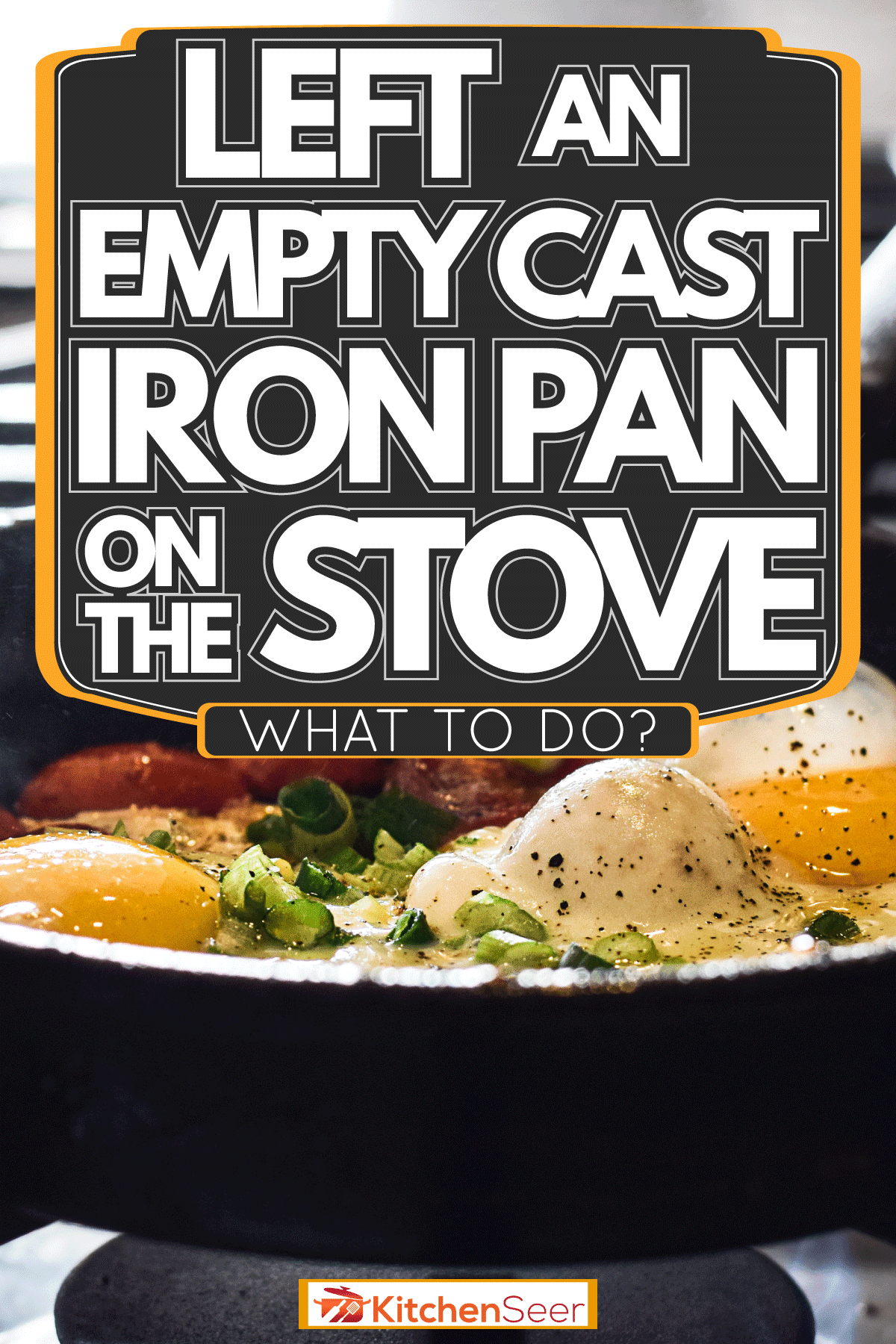
What Happens If I Leave My Empty Cast Iron Pan On The Stove
If you're looking for cookware that will survive a lifetime of use and can transition quickly from the stovetop to your oven, you've found it! Cast iron pans are valued for being versatile and durable. One of the most valued qualities is being able to withstand very high cooking temperatures.
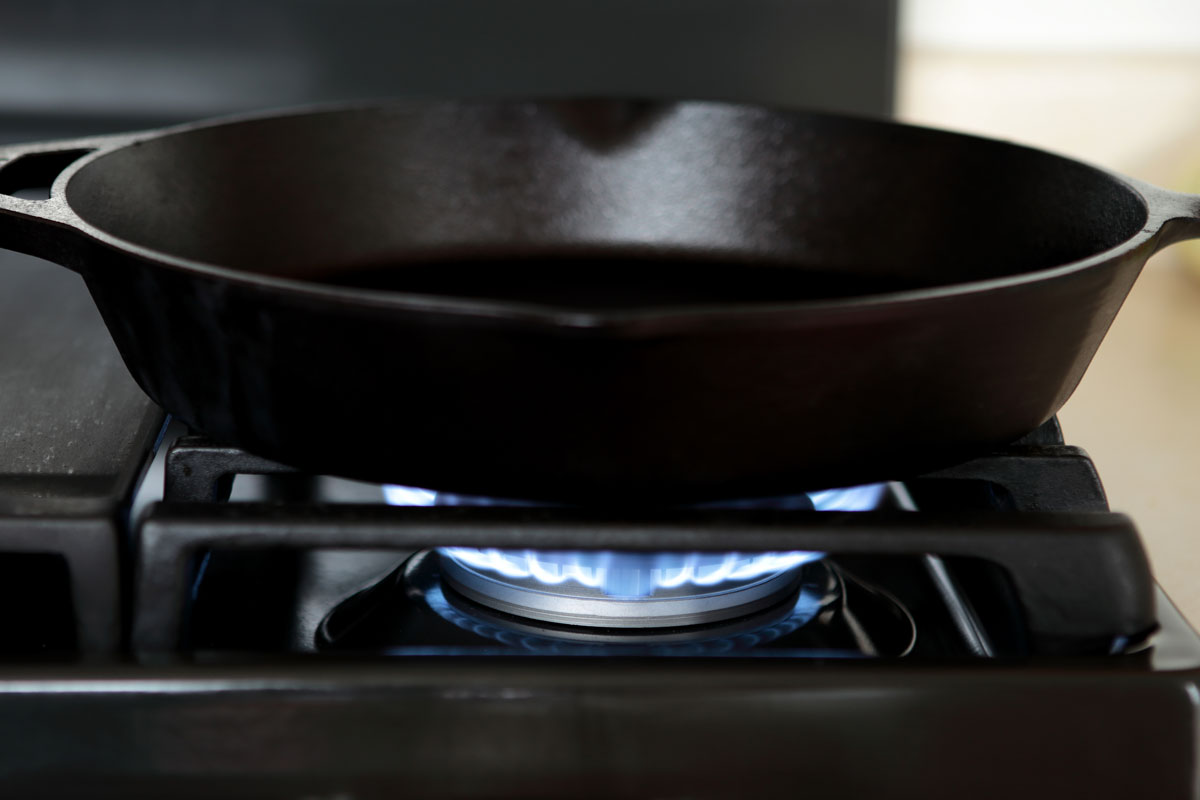
Cast iron pans are known to withstand temperatures up to 700°F. However, despite withstanding these temperatures, cast iron pans can still get ruined when exposed to too much heat. On some occasions, people had left their empty cast iron pans on the stove while seasoning their pans.
Check out this cast iron pan on Amazon.
If you leave your empty cast iron pan on the stove, you might find that it will have some rusty flakes coming off. This is the seasoning of your cast iron pan getting burned off from the high heat of the stove. While it may look like it is beyond repair, you'll be happy to know that it can be easily restored and fixed by re-seasoning your pan.
How To Fix A Ruined Cast Iron Pan
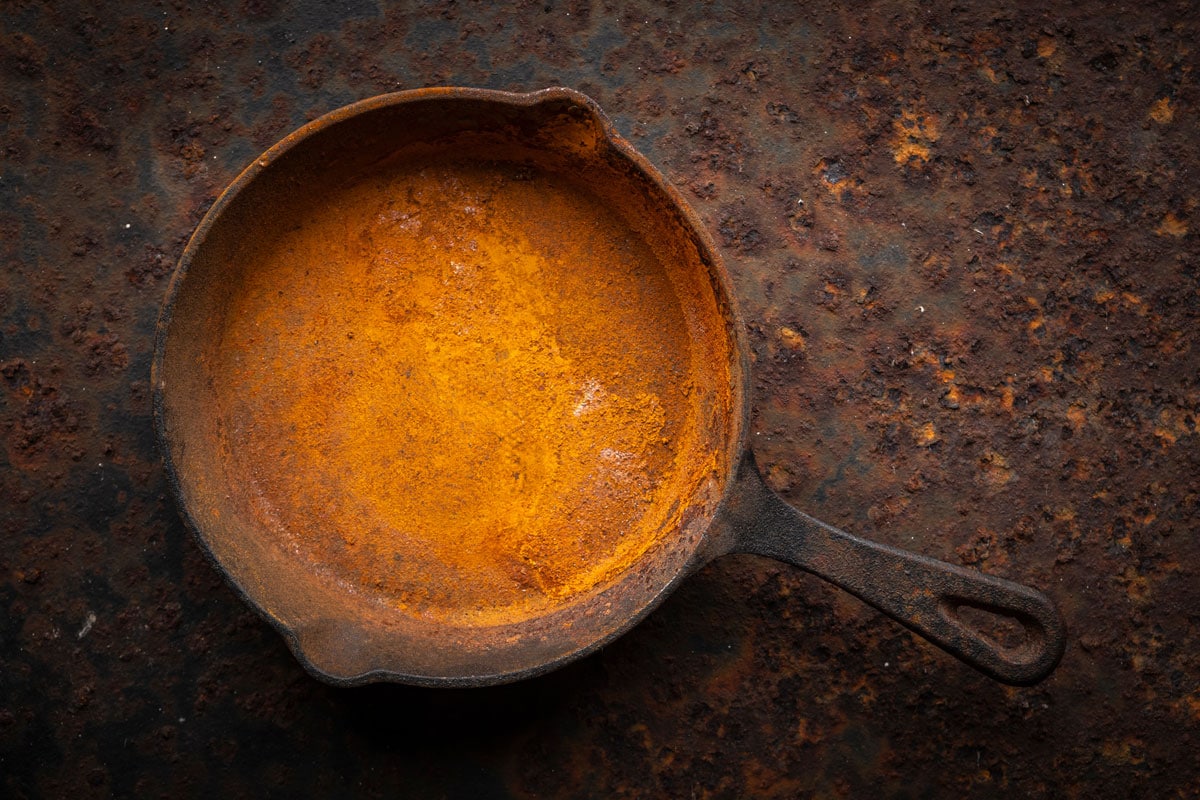
Most of the time, people think that their cast iron pans are beyond repair when they've started rusting or flaking off. One of the best things about cast iron pans is the ease in which you can restore them to their former glory. Here, we've listed down a quick guide on you can fix your ruined cast iron pan.
Materials needed:
- Scrub pad or brush
- Steel wool scrubbers
- Baking soda
- Mild dish soap
- Neutral cooking oil (such as grapeseed oil, vegetable oil, or canola oil)
- Paper towels or kitchen towels
Instructions:
- Remove the burnt and flaking seasoning off the pan by scrubbing it with steel wool. Sprinkle baking soda and spray with a little water to help scrub off the rust and ruined seasoning off the pan.
- Wash your pan with warm water and mild dish soap. Use a scrub pad or brush to completely strip the pan of old oils.
- Dry the cast iron pan thoroughly with paper towels. Make sure that all moisture is removed from your pan. You can do this by putting the pan on the stovetop for a minute or two to remove all the water.
- Using paper towels, rub a layer of cooking oil over both sides of your cast iron pan. Do not forget to rub a layer of oil all over your entire pan, including the handle. Buff it well until it doesn't look greasy.
- In a preheated 450°F oven, place the pan upside down on the rack and leave it in for 30 minutes. It might get a little smoky in your kitchen so make sure that the room is well ventilated.
- Repeat the process three to four times. This will ensure that your cast iron pan is well-seasoned.
How To Care For Cast Iron Pans
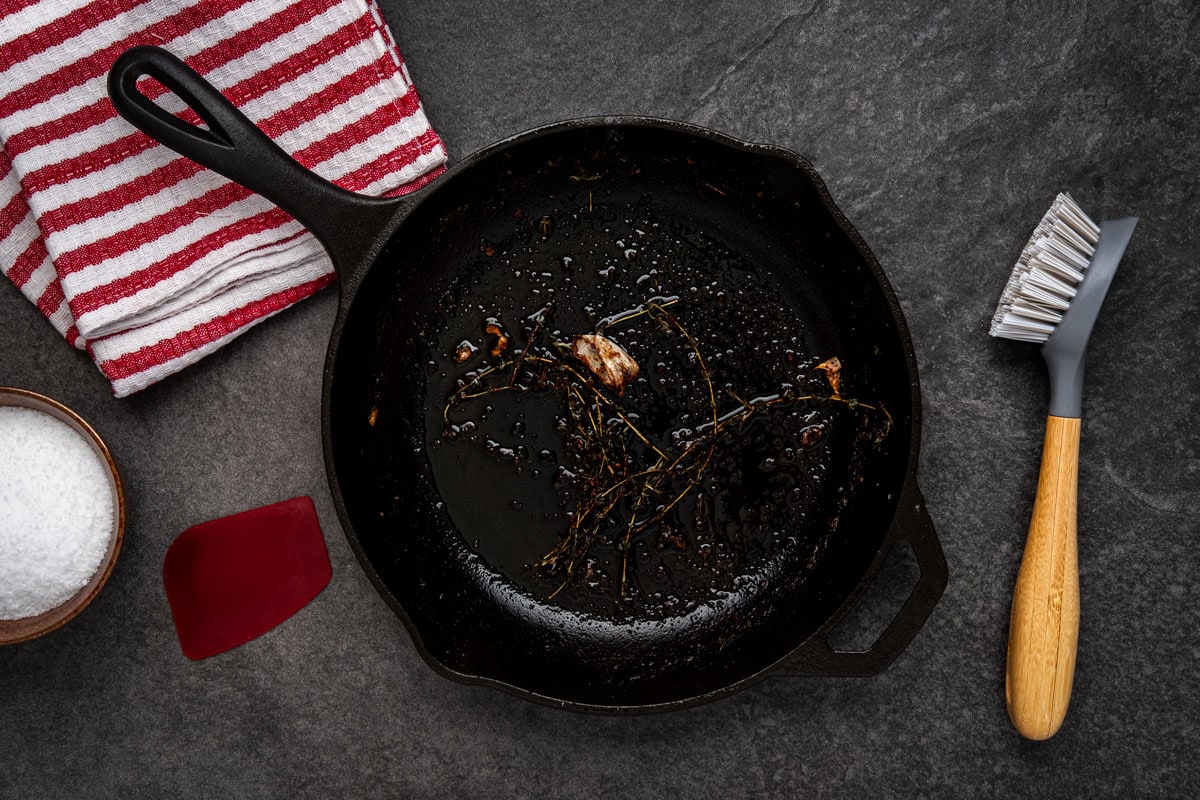
Cast iron pans are meant to last for a lifetime. Unlike other cookware, these pans are built to last for generations as long as they are well-maintained and cared for.
There are a few ways to make sure that your cast iron pans will last for a very long time. This includes cleaning your cast iron pans after use. In this article, we will be listing how you can clean your cast iron pans for everyday use and even how to get rid of stuck-on food bits.
Everyday cast iron cleaning
One of the things that must be remembered when using cast iron pans is that they cannot go in the dishwasher or be left to soak in the sink overnight. Doing these things will ultimately lead to rusting, and it can be a bit bothersome to keep having to strip and re-season your pans.
Fortunately, cast iron pans are easy to clean. Contrary to popular belief, you can use a little bit of mild dish soap on your cast iron pans without damaging them. Just make sure that your pans are well-seasoned and that you will use a non-abrasive sponge to clean them.
Get this mild dish soap on Amazon.
Instructions:
- After cooking, allow your pan to cool before washing. Do not submerge or put a hot pan under cold water because it will shock your cast iron pan and it might crack or warp.
- Using some mild dish soap, a non-abrasive sponge, and some hot water, scrub your pan gently. Rinse clean and dry thoroughly.
- Place your pan on the stovetop on low heat, or inside the oven at around 200-300°F to remove all the moisture from the pan. Make sure that the pan is bone dry before you attempt to store it to prevent rusting.
- When the pan is dry, coat your pan with a thin layer of neutral cooking oil by using a paper towel or rag. Make sure to rub the oil all over the pan, including the handle.
Removing stuck-on bits
Sometimes, it is inevitable for some food bits to get stuck on your cast iron pans. When this happens, you can use a little bit of kosher salt and a non-abrasive sponge to remove the stuck-on food completely.
While the pan is warm (make sure it's not hot!), add about 1/4-cup of kosher salt and a few drops of warm water to turn it into a salt scrub. Using a non-abrasive sponge or brush, remove the stuck-on food by rubbing the pan in circular motions until you get the gunk out. Wash, dry, and wipe a layer of oil on your pan before storing it.
Check out this non-abrasive sponge on Amazon.
Another way to remove food that has been stuck on the pan is by using boiling water. Add one or two cups of water to your cast iron pan and let the water boil over high heat until the food bits loosen up. You can help out the gunk by loosening it using pan scrapers, or you can use a wooden spatula, as well.
Don't forget to wash, dry, and oil your cast iron pans before keeping them in storage.
Get these cast iron scrapers on Amazon.
Sticky cast iron pans
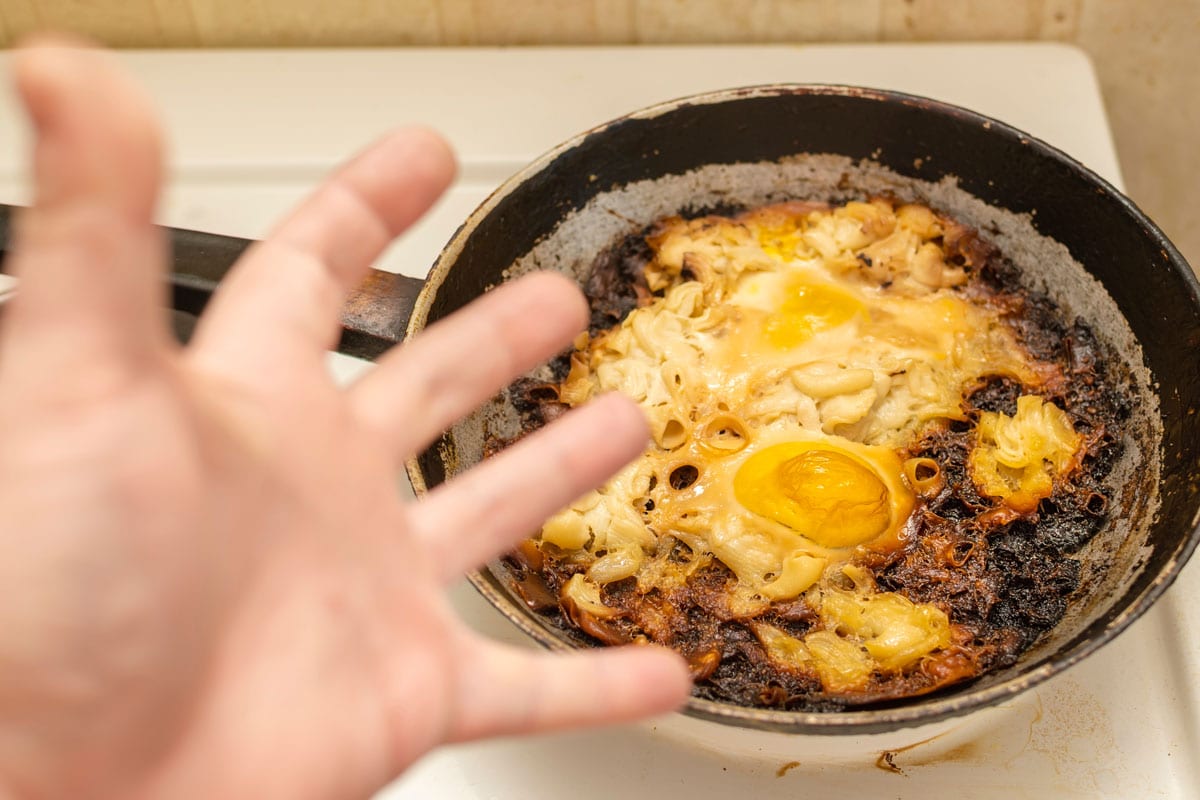
On some occasions, you may find that the seasoning of your cast iron pans is a little sticky. When this happens, this indicates that there is an excess of oil that is building on the surface of your pans.
To remedy this issue, simply place your cast iron pans upside down on the top rack of your oven. Bake the empty pan at 450-500°F for about an hour and let cool completely. If the pan is still sticky, repeat the process if necessary.
Smelly pans
Pungent food may cause lingering smells on your cast iron pan. If this happens, bake the cast iron pan in a 400°F oven for at least 15 minutes. If the smell still persists, you can sprinkle a layer of cooking salt on the cooking surface and leave it overnight before washing it off in the morning.
In Conclusion
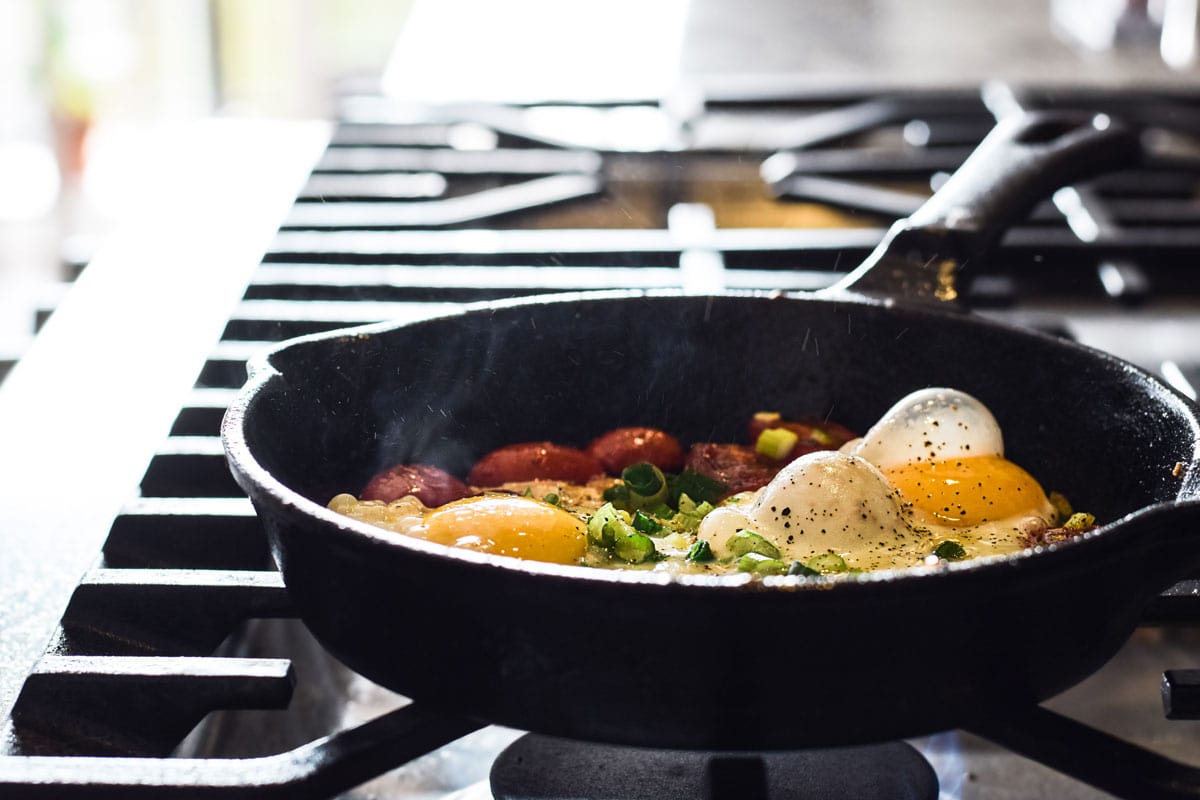
Cast iron pans are versatile and durable pans that will last a lifetime. However, there may be moments in which it can get ruined because of certain circumstances, like being left on the stovetop for an extended period. Fortunately, because of its durable nature, cast iron pans are easily restored and fixed by cleaning and re-seasoning the pan completely.
If you're into getting a cast iron pan for yourself, you might be looking for more information to learn more about the care of your cookware. We've got a couple of articles that you might enjoy:
How Often Do You Season A Cast Iron Pan?
What Oil Is Best For Cast Iron Cooking?





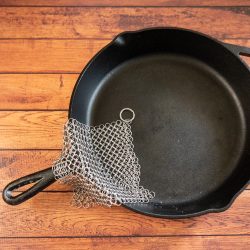
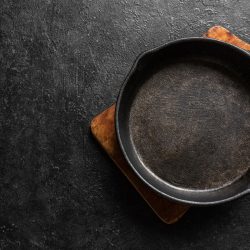
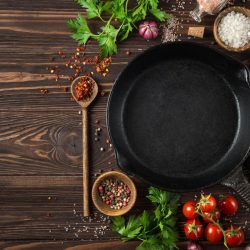

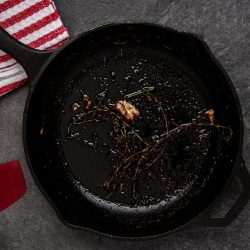
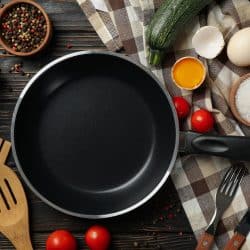
Great advice- it’s the way I’ve been treating my cast iron for years
Unfortunately a housemate left my cast iron griddle on the burner for a very long time. I can reseason the inside but the bottom is burnt Bright orange . Can I treat the bottom outside of the griddle as I would the inside? Thanks